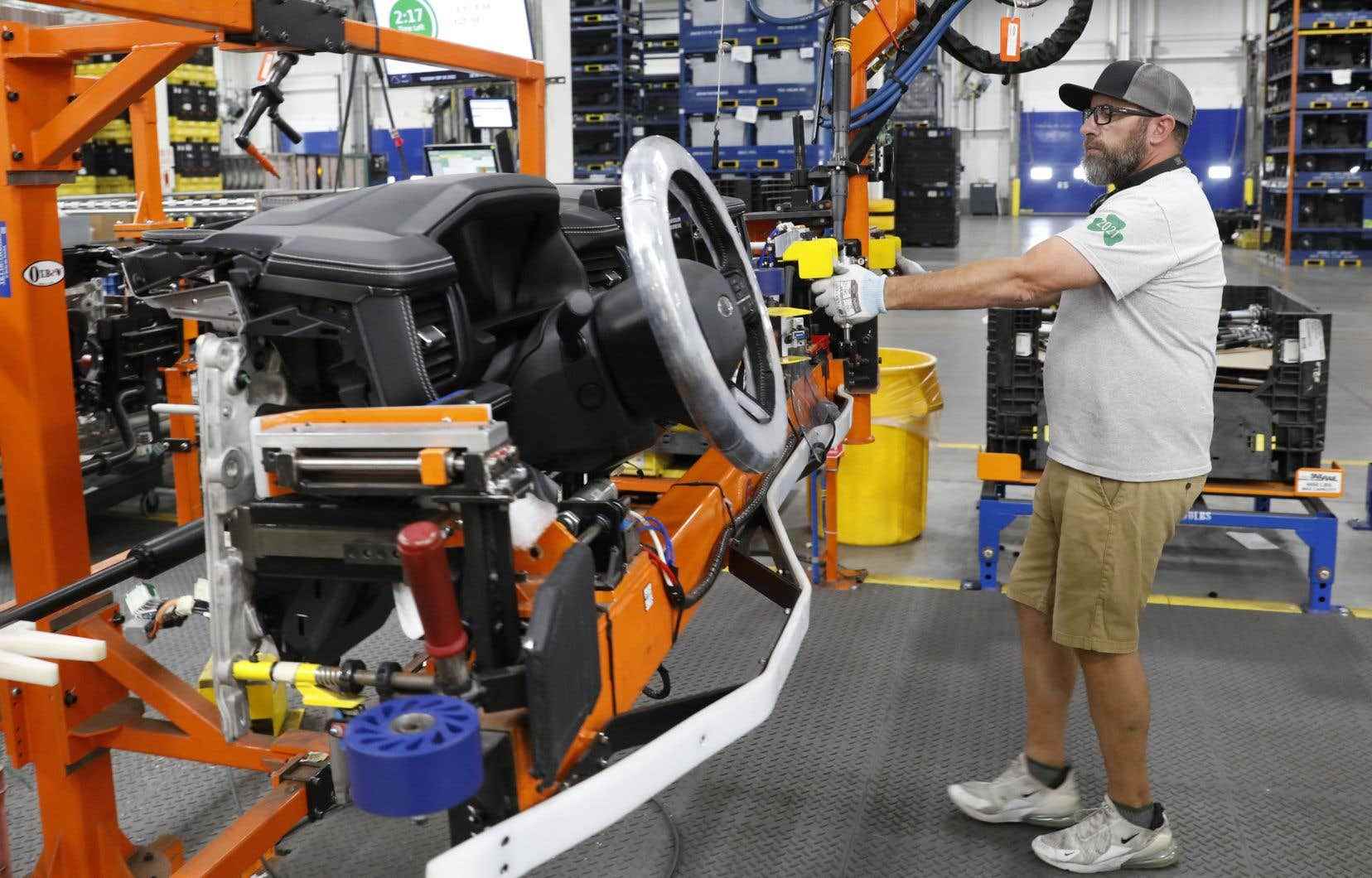Joe Biden hailed the ‘driving force’ of the US economy, which returned to growth in the third quarter for the first time this year, bringing the president a bright spot ten days before the midterm elections, as the recession watch.
In the three months from July to September, gross domestic product in the United States rose 2.6% at an annualized rate, according to the Commerce Department’s first estimate released Thursday.
The world’s largest economy is thus growing for the first time since the start of 2022, and the rebound is stronger than expected, since analysts expected gross domestic product (GDP) to increase by 2.3%. .
This rebound offers a temporary respite to the American president, just before the midterm elections which could deprive him of his Democratic majority in Congress. Inflation and fears of recession in the coming months have undermined the upturn enjoyed by his side in the polls until recently.
“For months, doomsayers have argued that the US economy was in recession and Republican congressmen were hoping for a decline. But today we have new evidence that the economic recovery continues to be a driving force,” Joe Biden said in a statement from the White House.
“Always positive dynamic”
GDP had contracted in the first two quarters of the year, falling 1.6% then 0.6%, but without falling into recession at this stage, according to the Biden administration, but also many economists .
They believe that, although these two consecutive quarters of decline in GDP correspond to the commonly accepted definition of a recession, the solidity, in particular, of the job market does not allow the first economy in the world to enter this box.
Third-quarter figures show “continued positive momentum in household spending, a rebound in business investment, but continued weakness in residential investment,” HFE economist Rubeela Farooqi commented in a note.
But the risks of recession remain for the months to come. Joe Biden himself had mentioned at the beginning of the month the possibility of a “very slight recession”.
In question ? Inflation, which remains close to its highest level in 40 years, at 8.2% over one year in September in the United States. And reduces the purchasing power of households.
Especially since the remedy for this rise in prices is to slow down the economy by raising interest rates.
Home or consumer loans now cost a lot more than there used to be. Less consumption, less investment, should make it possible to cool an overheated economy.
dollar strength
Thus, warns Rubeela Farooqi, “Looking forward, the risks are tilted to the downside, particularly for consumption, as households continue to face difficulties linked to high prices and the probable slowdown in the growth of use “.
Especially since “the strength of the dollar and the weakness of global growth will limit exports”, also anticipates Ian Shepherdson, economist for Pantheon Macroeconomics.
It is the American central bank (Fed) which has the cards in hand to fight against inflation. It is gradually raising its rates, to encourage commercial banks to do the same when granting loans.
After four increases already, it should continue this momentum at its next meeting, Tuesday and Wednesday.
And the slowdown could be global, while inflation is high in very many regions. Several developed countries could thus experience a recession in 2023, such as Germany and Italy, the International Monetary Fund (IMF) recently warned.
The calculation of GDP at an annualized rate, a measure favored by the United States, compares to the previous quarter and then projects the evolution over the entire year.
Growth is 0.6% if we simply compare to the previous quarter, as do other advanced economies, the countries of the euro zone for example, like France whose GDP, published on Friday, is expected to show very slight growth, at +0.2%.
And comparing the GDP of the 3e quarter of 2022 to that of the 3e quarter of 2021, as China does, American growth is 1.8%, compared to 3.9% for its Asian competitor.
